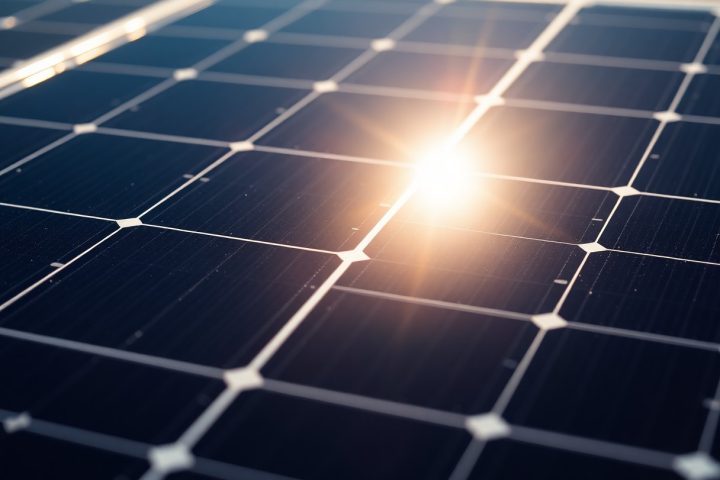You may be curious about how photovoltaic cells convert sunlight into electricity and the materials that make this conversion possible. In this blog post, we will research into the workings of these innovative devices, exploring the science behind their function and examining the various materials used in their construction. By understanding how photovoltaic cells operate and what they’re made from, you can gain insights into their role in renewable energy solutions and their impact on your energy consumption.
The Science Behind Photovoltaic Cells
While understanding photovoltaic cells requires a basic grasp of physics and materials science, their operation revolves around the behavior of electrons in semiconductor materials. When exposed to sunlight, these cells convert light energy into electrical energy, showcasing the remarkable intersection of materials science and renewable energy technology. You’ll gain insight into how specific materials interact with light and generate electric currents that power your devices and homes.
The Photovoltaic Effect
By exposing certain materials to light, you can harness the photovoltaic effect, where photons dislodge electrons, creating electron-hole pairs within a semiconductor. This process is fundamental to the operation of solar cells, allowing you to tap into a renewable energy source that significantly reduces dependency on fossil fuels. Knowing how this phenomenon works enhances your appreciation of solar technology.
Energy Conversion Process
Effectively, the energy conversion process in photovoltaic cells involves several key steps. First, light energy absorbed by the solar cell generates electron-hole pairs. Next, an internal electric field within the semiconductor material drives the movement of these charged particles. As electrons flow towards the external circuit, they generate direct current (DC) electricity, which can then be converted to alternating current (AC) for residential use.
Considering the efficiency of energy conversion in photovoltaic cells, solar technology has made significant advancements. The entire process begins with the absorption of photons, which excites electrons in the semiconductor, followed by the formation of charged particle pairs. These particles are then propelled by the cell’s internal electric field, resulting in a flow of electric current. The design of modern solar cells leverages materials with optimal band gaps, enhancing their ability to convert sunlight into usable electrical energy and allowing you to harness the power of the sun more effectively.
Materials Used in Photovoltaic Cells
Even though various materials are utilized in the production of photovoltaic cells, the most common include silicon, cadmium telluride, and copper indium gallium selenide. Each material has its unique properties and efficiency levels, influencing the overall performance of solar panels. Understanding these materials helps you identify the best options for your solar energy needs and the potential benefits they can bring to your energy consumption and sustainability goals.
Silicon-Based Cells
Used extensively in the solar industry, silicon-based cells account for over 90% of the photovoltaic market. These cells come in monocrystalline, polycrystalline, and amorphous forms, each offering different efficiencies and production costs. With a strong track record, silicon cells are well-regarded for their durability and performance longevity, making them a popular choice for residential and commercial applications.
Thin-Film Technologies
The thin-film technologies provide an alternative to traditional silicon-based cells by using a variety of materials, such as cadmium telluride or copper indium gallium selenide. These films are lightweight and flexible, allowing for diverse applications, even on irregular surfaces. Their lower production costs can be appealing, but they typically produce less energy than their silicon counterparts.
A significant advantage of thin-film technologies lies in their versatility and ease of integration into existing structures. You can apply these materials onto a range of substrates, making them ideal for building-integrated photovoltaics (BIPV) and portable devices. While they may have slightly lower efficiencies, advancements in manufacturing techniques continue to improve their performance and cost-effectiveness, ensuring you have more options when considering solar energy solutions.
Types of Photovoltaic Cells
The various types of photovoltaic cells provide different benefits and efficiencies. Below is an overview of the most common types:
| Type | Description |
|---|---|
| Monocrystalline | Made from a single crystal structure, offering high efficiency. |
| Polycrystalline | Composed of multiple crystal structures, typically less expensive. |
| Thin-Film | Flexible and lightweight, but usually less efficient. |
| Bifacial | Can capture sunlight from both sides, increasing energy production. |
| Building-Integrated | Integrated into building materials, serving dual purposes. |
Assume that you are considering the best option for your solar needs; understanding these types will guide your choice.
Monocrystalline vs. Polycrystalline
With monocrystalline cells generally exhibiting higher efficiency rates of 15-22%, they are commonly preferred for limited roof space. In contrast, polycrystalline cells, while slightly less efficient at 13-16%, are more cost-effective and can be a viable option for larger installations.
Bifacial and Building-Integrated Photovoltaics
Monocrystalline and polycrystalline cells can also come in bifacial designs, allowing panels to capture light from both sides for increased energy output. Building-integrated photovoltaics (BIPV) blend solar technology into the building’s architecture, making them an aesthetic choice that doesn’t compromise design.
But adopting bifacial or building-integrated photovoltaics can optimize your energy efficiency. These systems not only maximize the collection of sunlight but can also enhance the value and appeal of your property. It’s an innovative solution that aligns sustainability with modern architectural design, giving you the dual benefit of energy generation and aesthetic integration.
Advantages and Disadvantages
Not every energy solution is perfect, and photovoltaic cells are no exception. While they offer numerous benefits such as reducing electricity bills and promoting sustainability, they also come with challenges. These can include high initial installation costs, space requirements for solar panels, and varying efficiency under different weather conditions. Understanding both sides will help you make an informed decision regarding solar energy for your needs.
Benefits of Photovoltaic Technology
Advantages of photovoltaic technology are abundant. By harnessing solar energy, you can significantly reduce your energy bills and decrease your carbon footprint. Additionally, photovoltaic systems can operate with minimal maintenance once installed, and they add value to your property while providing energy independence. Furthermore, you contribute to a growing market that supports clean energy initiatives.
Limitations and Challenges
After considering the benefits, you should also be aware of the limitations and challenges associated with photovoltaic technology. Initial costs for purchasing and installing solar panels can be a barrier for many, and panel efficiency can fluctuate with weather changes. Furthermore, storing energy for nighttime use or cloudy days may require additional investment in battery systems.
Another challenge is that the production of photovoltaic cells involves resource-intensive processes and materials which may have environmental impacts. Additionally, space requirements can be prohibitive, especially in urban settings where rooftops may not provide sufficient area for effective solar panel placement. It’s important to weigh these issues when thinking about integrating photovoltaic technology into your energy strategy.
Applications of Photovoltaic Cells
To understand the versatility of photovoltaic cells, it’s important to note their widespread applications across various sectors. From powering homes to fueling large-scale energy projects, these cells play a significant role in promoting renewable energy. As you probe into their uses, you’ll discover how PV technology adapts to your specific energy needs and contributes to sustainability efforts globally.
Residential and Commercial Use
Applications in residential and commercial settings have surged as homeowners and businesses seek greener energy sources. By installing photovoltaic systems on rooftops or in designated solar farms, you can significantly reduce electricity bills while contributing to a cleaner environment. This sustainable energy option enhances your property’s value and provides energy independence.
Utility-Scale Solar Energy
About utility-scale solar energy, these expansive solar farms generate large amounts of electricity to feed directly into the power grid. This approach allows you to access renewable energy on a massive scale, providing clean energy to thousands of homes and businesses. As a result, transitioning towards utility-scale solar projects can lead to more sustainable energy systems and reduced reliance on fossil fuels.
Due to the increasing demand for renewable energy solutions, utility-scale solar energy projects are becoming more common. These large installations harness sunlight efficiently and can produce substantial electricity outputs. You may find that these farms play a key role in balancing energy supply and demand, showcasing the ability of photovoltaic technology to meet the needs of growing populations while addressing climate change concerns.
Future Trends in Photovoltaic Technology
After years of steady development, the future of photovoltaic technology promises groundbreaking advancements that could enhance efficiency and reduce costs. Emerging technologies, such as bifacial solar panels and perovskite solar cells, aim to maximize energy capture and broaden applications. You can expect a shift toward integrated systems, where solar power generation is seamlessly woven into building designs and infrastructure, making renewable energy even more accessible and efficient.
Innovations and Research Developments
By exploring new materials and manufacturing techniques, researchers are focusing on improving the efficiency and affordability of solar cells. New developments, including organic photovoltaics and tandem cells, seek to combine various materials to capture more sunlight and convert it into usable energy. These innovations are designed to elevate your experience with solar energy, making it a more viable option for your energy needs.
Sustainability and Recycling Efforts
Below the surface of technological evolution, sustainability is a focal point within the photovoltaic industry. As solar technologies advance, efforts toward recycling and reducing waste are gaining momentum. You should be aware of initiatives aimed at developing processes to recover valuable materials from old solar panels, ensuring their components can be repurposed and reused.
This commitment to sustainability includes improving the lifespan of solar cells and minimizing environmental impact during production. Companies are increasingly focused on creating recyclable solar modules and implementing take-back programs for end-of-life panels. As you consider adopting solar technology, knowing these efforts can provide peace of mind, knowing that you are contributing to both energy generation and environmental responsibility. Investing in solar panels offers a long-lasting, renewable energy source while aligning with initiatives aimed at reducing waste and promoting recycling.
Conclusion
Considering all points, you now have a clearer understanding of how photovoltaic cells operate and the materials that enable their efficiency. By converting sunlight into electricity, these cells play a vital role in sustainable energy solutions. Understanding the components and technologies behind them can empower you to make informed decisions regarding solar energy investments or applications. Embracing this knowledge positions you to navigate the evolving landscape of renewable energy seamlessly.




